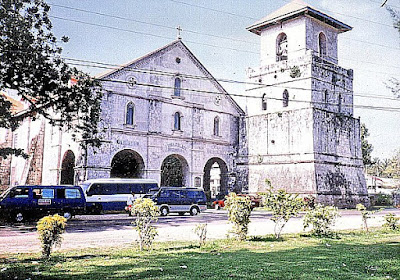| Balicasag Island Dive Resort |
Panglao Island’s deep waters are home to whales and dolphins that appear all year round, especially between the months of April and June. Having arrived on the last week of May, we were hoping to do some dolphin watching of our own at nearby Balicasag Island which lies off Panglao Reef, 4 kms. southwest of Duljo Point. Balicasag is also touted as the country’s second best diving spot. The island’s north and northwest side has a narrow shelf, 10 to 50 m. wide and about 7 m. deep, ending in 2 excellent vertical walls that fall forever. In fact, 80 to 90% of the tourists who visit Panglao come primarily for the Balicasag scuba diving. The first recorded dive of the island on the island was done on May 6, 1984.
 |
| On our way |
To get to the island, I hired an outrigger boat. Grace, my kids Jandy and Cheska and my brother-in-law Mark joined me and we all brought our swimming and snorkeling gear, suntan lotion and some packed lunch. We left very early in the morning for the 10-km. (45-min.) boat ride to the island. However, throughout the boat tour, we failed to sight any dolphins or whales and so we contented ourselves with snorkeling its beautiful underwater scenery just off the shore.
 |
| Balicasag Island |
We later made a landfall at the other side of the flat, barren 21-hectare island which is ringed by a pristine sandy shell, coraline beach. The island’s name was derived from the Visayan words bali, meaning “change,” and kasa, meaning “noise,” in reference to the waves slapping the shore as the wind changes direction. The island was declared as a lighthouse reservation as early as 29 October 1907. Jandy and I went around the island in less than half an hour. On the southwest side of the island is the 1.5-hectare, Philippine Tourism Authority (PTA)-managed Balicasag Island Diving Resort, established on April 6, 1987. Right in front of the resort is a 3.44-hectare marine sanctuary declared by the Department of Environment and Natural Resources (DENR). The resort has 10 native-style duplex cottages with bath and porch, plus a main restaurant pavilion with an adjacent alfresco dining area and bar. It also has a dive shop offering dive courses.

























